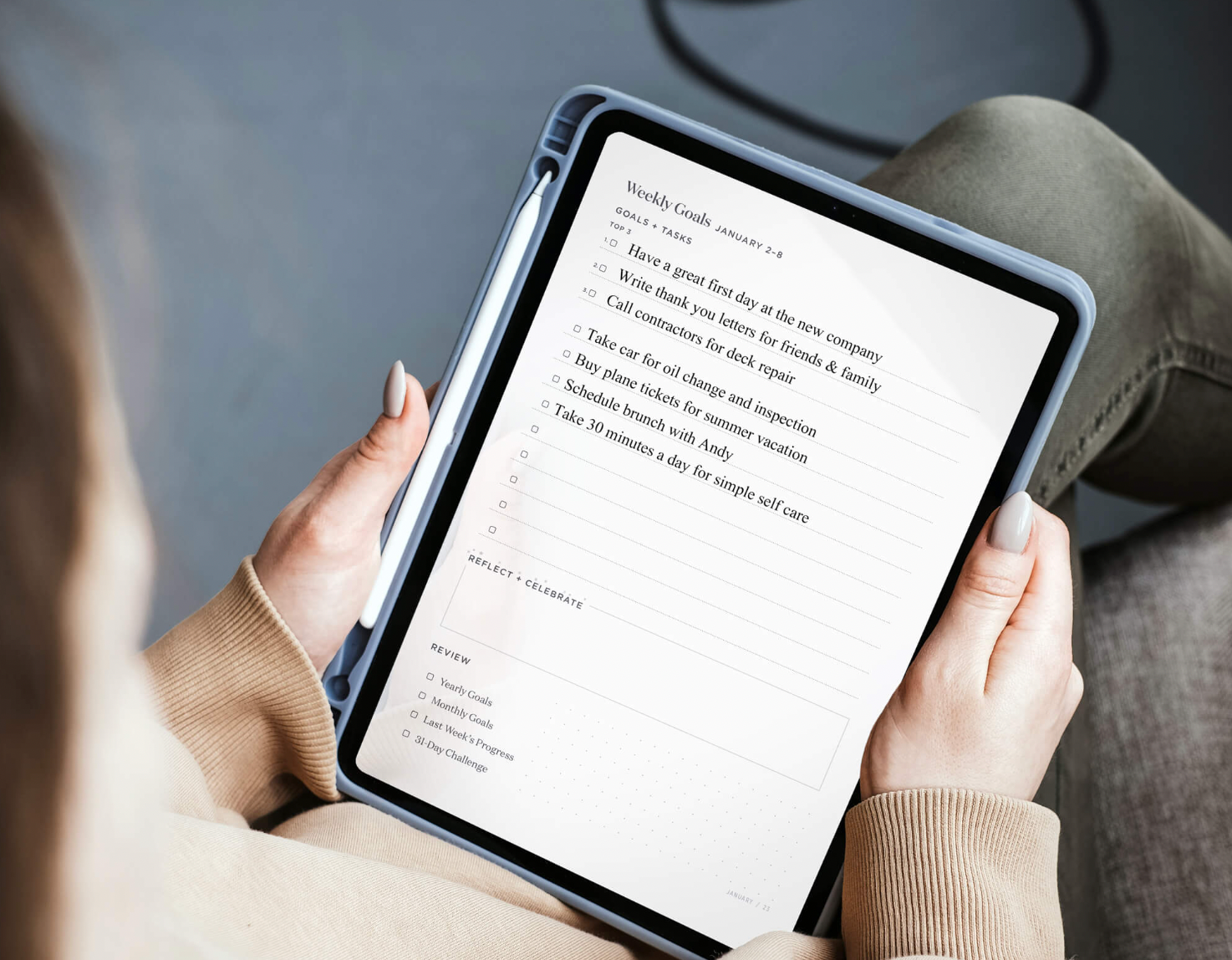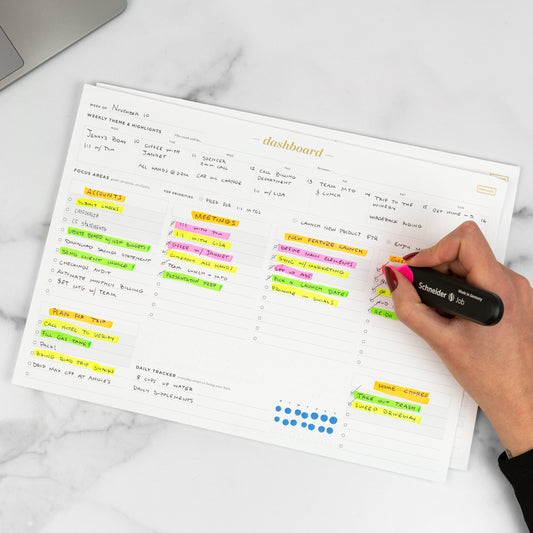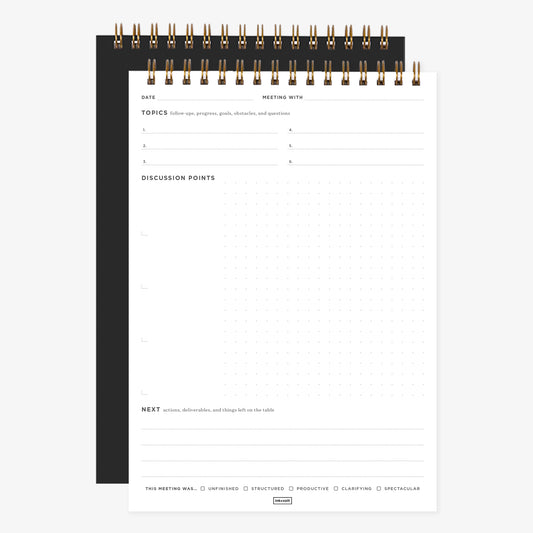Start the year off strong with a Q1 review.
Most companies conduct a quarterly review with their employees to ensure that they’re staying on track with their annual goals. But have you ever thought about conducting a Q1 review of your own?
If you wait until the end of the year to check in with your goals, it might be too late to address any challenges or readjust your strategy. That’s why it’s so much more effective to do a quarterly check-in instead.
Here’s why you’ll want to start conducting quarterly reviews, starting with Q1:
- You don’t have to wait until the end of the year to see if your current goal strategy is working.
- You can identify solutions to current challenges instead of letting them worsen over time. For example, if you notice that your side hustle is losing clients, you can come up with new ways to attract business right away.
- A 3-month period is an ample amount of time to measure your progress. You’ll have enough data and intel on hand to detect patterns and trends in your behavior. So if the data is showing that you have a tendency to skip morning workouts, then you would adjust your scheduling in Q2. Or if you noticed that most of your new clients came through referrals, then you would replicate that process the next quarter.
- You get to celebrate your progress more frequently instead of waiting until the end of the year to do so.
Some people like to do a comprehensive quarterly review, reflecting on their professional and personal goals. Others like to use their quarterly review to focus on their business. While some may use it to measure their progress on their creative goals.
If this is your first Q1 review, then choose 1-3 goals to reflect on. You can always adjust as necessary.
Tools you’ll need for a Q1 review
Here are some tools you’ll want on hand to help you reflect on your progress this quarter.
Paper planner or calendar. Your planner or calendar contains important information on what you did in Q1. You’ll want to review your meetings, appointments, events, etc. to see how you’ve been spending your time and energy.
Notebook. You’ll need this to write down your observations, do some reflection exercises, and brainstorm next steps for the second quarter.
Markers. If you’re visually minded, colorful markers will help you organize your thoughts and bring your attention to important information.
White board or flip chart. For brainstorming sessions, use a white board or flipchart to capture all your ideas. Don’t have one? You can also put post-its on the wall.
Q1 review questions
Here are some prompts to help you review the first quarter of the year.
What were your Q1 goals and targets?
Your goals are the ideas, projects, or habits you were hoping to develop or successfully accomplish this quarter. For example: to expand your professional network; to workout more; to grow your freelance business.
Your targets are the specific results that let you know you’re successfully working toward your goal. Targets help you measure your progress and clearly see if you’re actually meeting your goal or not. It’s good to have around 3-5 Targets.
So if your Q1 goal was to expand your professional network, then your 3 Targets could be: Have coffee with 10 professional acquaintances, connect with 20 people on LinkedIn, touch base with 5 former colleagues.
If you successfully met your goal, what went right?
Let’s stick with the example of “expand my professional network.” So if you successfully reached your targets, jot down why you think you were successful.
Maybe you made a list of people to reach out to and scheduled it in your calendar. Maybe you used social media to stay connected.
Take note of the strategies and techniques that worked so that you can continue using them in Q2.
If you didn’t meet your goal, what challenges did you encounter that got in the way of your goal? What would you do differently next time?
Maybe your goal was to start a running routine but bad weather got in the way. Or you wanted to read more books but you found yourself getting distracted. Once you identify the challenges that came up for you, start brainstorming solutions to help you overcome them the next time around.
So, for example, if you’re trying to start a running routine, then you could find an indoor gym and run on the treadmill during bad weather days. Or invest in water-proof running gear for rainy days.
What do you need to do in Q2 to align with your goals?
If you didn’t reach your Q1 goals, what do you need to do to ensure that you stay on track in Q2?
Maybe it’s managing your expectations and making your goals more realistic. So if your previous goal was to read 10 books a month, maybe reduce it to 5 books a month.
Or maybe you realized that your Q1 goals didn’t make you feel fulfilled. For example, you thought you wanted to connect with people on LinkedIn, but you realized you didn’t like being in front of a screen. Then think of new ways to make this goal work for you. Solutions can be: sign up for an in-person class or networking event; asking your friends to connect you with people you can meet in person.
And make sure to add your Q2 goals to your planner so that you can stay committed to them.
Make a positive/negative list
If you’re short on time, or if you prefer the simplicity of lists, try this exercise from author and podcaster Tim Ferris.
Step 1: Grab a sheet of paper and divide it into two columns: positive and negative.
Step 2: Using your planner or calendar, take note of the people and activities from the past quarter. Meetings, social events, projects, coworkers, friends, family members, acquaintances, etc.
Step 3: In the positive column, put the people and activities that gave you a positive experience. These are going to be the friends, coworkers, and family members you really enjoyed spending time with. And the projects, hobbies, and other activities that made you feel confident or proud or fulfilled.
Step 4: In the negative column, you’re going to list the people and activities that gave you a negative experience. The energy vampires. The toxic coworkers. The projects or clients that left you feeling stressed and empty.
Step 5: Go through your positive and negative list and look for patterns. The people and activities that consistently brought positive feelings? Make an effort to hangout with those people and do those activities in Q2. The people and activities that brought negative experiences and emotions? Then reduce your time with them.
By taking the time to review your first quarter, you’ll be sure to have a successful rest of the year.
Written by JiJi Lee









